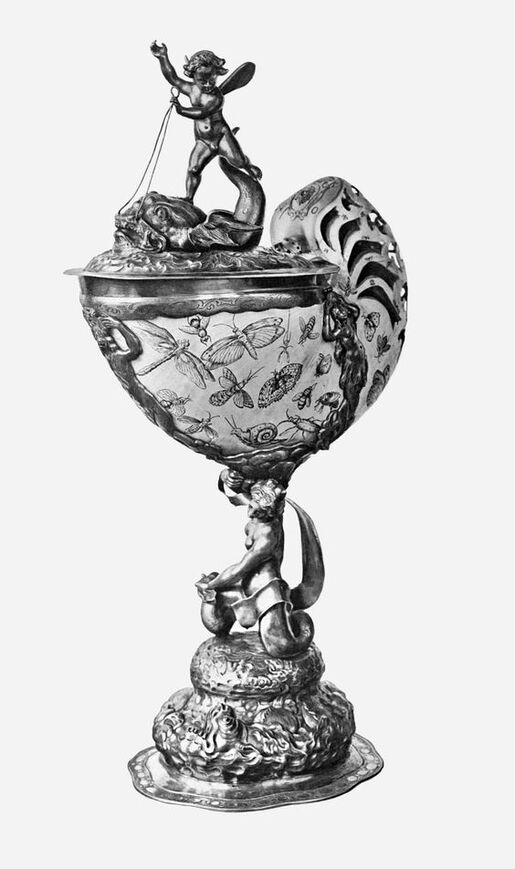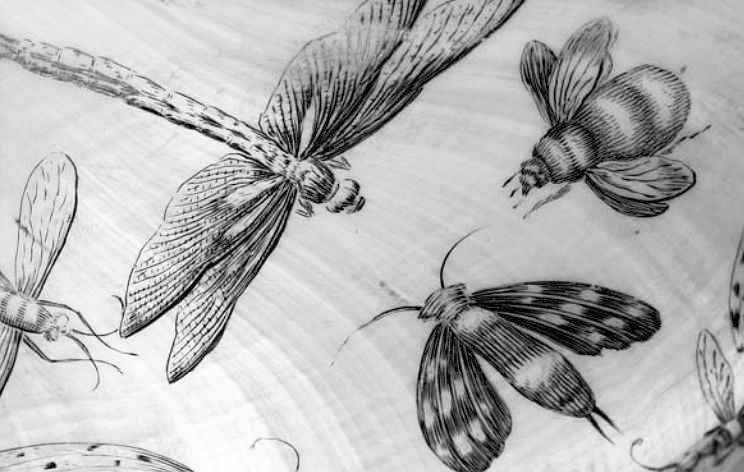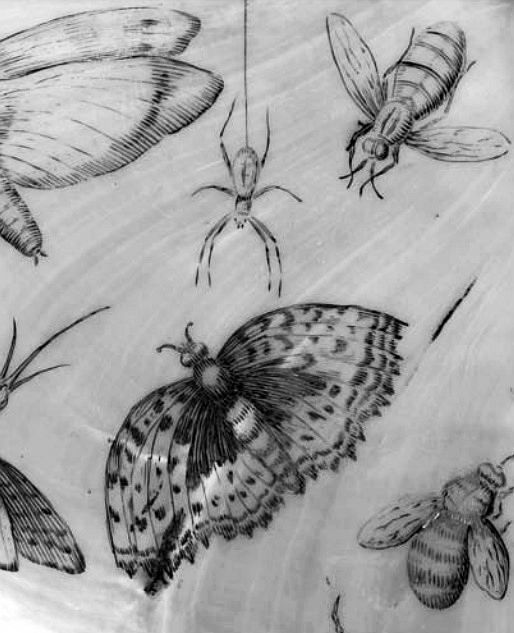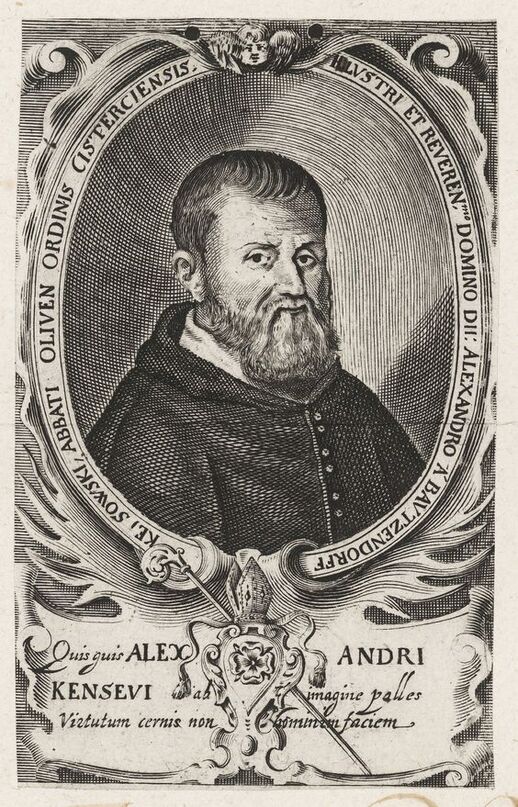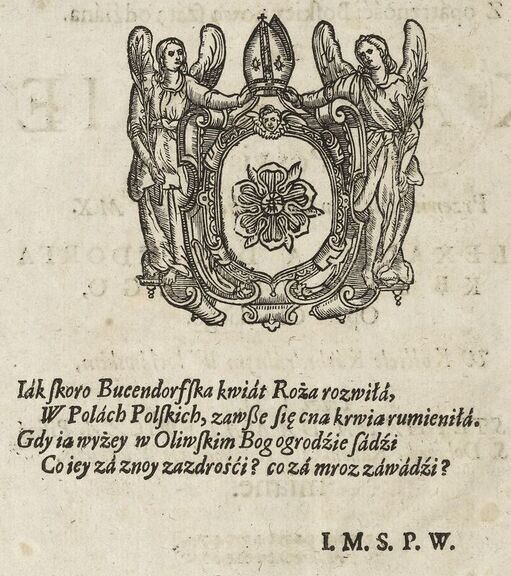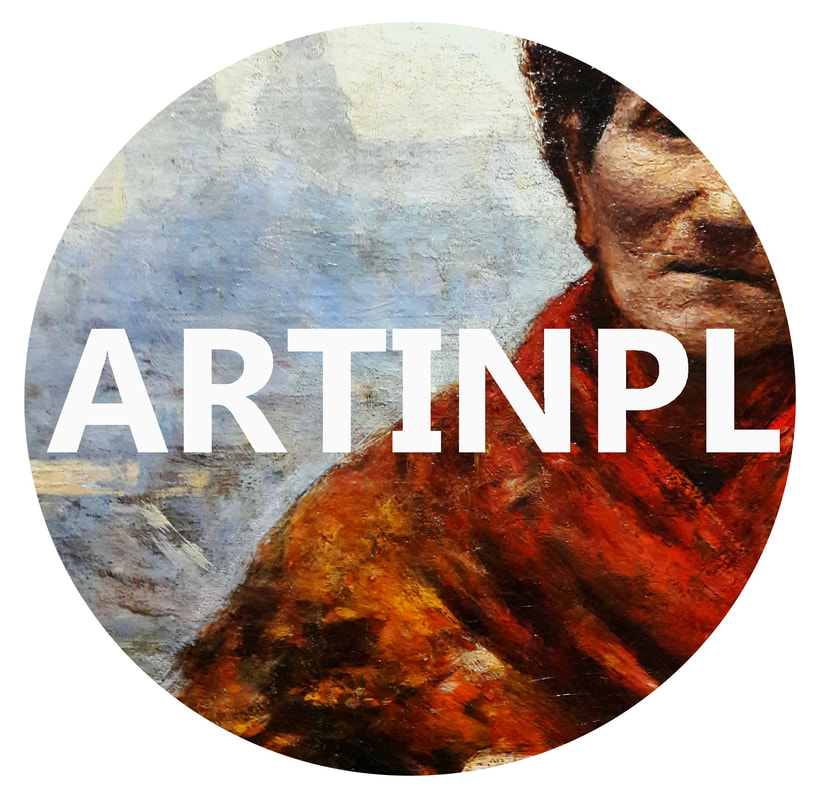|
The Museum of Decorative Arts (Kunstgewerbemuseum) in Berlin prides itself on its collection of over 40 cm high nautilus cup made by the royal goldsmith Andreas I Mackensen (inventory number 1993.63). The cephalopod shell is decorated with a engraved images of insects and bats and mounted in a silver, gilt frame with sea elements - the bowl is supported by Triton, the frame is in the form of sirens and sea waves, and the cover is decorated with a putto gliding on a sea monster. At the base of the cover there is the owner's coat of arms, Aleksander Kęsowski, abbot of the Oliwa Abbey, a six-petal rose and initials A / K / A / O (ALEXANDER / KENSOWSKI / ABBAS / OLIVAE). Kęsowski, born in Kąsów in Kuyavia in 1590, became the abbot in 1641, after the death of Michał Konarski. He was a good manager and founder of many sacred buildings and a hospital of St. Lazarus in Oliwa.
The richness of the Oliwa Abbey during Kęsowski's tenure is evidenced by the account of a gift offered to King John Casimir Vasa and Queen Marie Louise Gonzaga on the occasion of their visit to Gdańsk in 1651. The abbot invited the king to dinner and during this visit he "offered to His Majesty the King the amber clock, very expensive and high, for which he gave in Gdańsk three thousand zlotys [...] to Her Majesty the Queen he offered the amber casket, very beautiful, though small", confirms the royal courtier, Jakub Michałowski, in his diary of the "Prussian Journey". "So we left Oliwa on Wednesday after dinner, accompanied along the way for some time by this abbot [Aleksander Kęsowski], who bid us farewell with good wine with a chalice in his hand" - wrote in his "Diary of travel across Europe" from 1652 Giacomo Fantuzzi, an official of the Apostolic Nunciature in Warsaw, who after seven years in Poland returned to his native Italy via Gdańsk. Earlier on, he noted in his report that here "the dining table is very important and it is very expensive, because in Poland they live sumptuously and they give expensive parties". The cup was probably made in Gdańsk and could be a gift from the king or, more likely, was ordered by the abbot himself. It is possible to set the date of its creation in the interval between 1643, when Mackensen came from Kraków to Gdańsk, and 1667, the date of Kęsowski's death. At the beginning of the 20th century it was owned by count Friedrich Schaffgotsch in Cieplice, after World War II it belonged to Udo and Mania Bey in Hamburg, and in 1993 it was acquired by the Museum of Decorative Arts from Galerie Neuse in Bremen.
Nautilus cup with coat of arms of abbot Aleksander Kęsowski by Andreas I Mackensen, 1643-1667, Museum of Decorative Arts in Berlin.
Detail of nautilus cup with coat of arms of abbot Aleksander Kęsowski by Andreas I Mackensen, 1643-1667, Museum of Decorative Arts in Berlin.
Detail of nautilus cup with coat of arms of abbot Aleksander Kęsowski by Andreas I Mackensen, 1643-1667, Museum of Decorative Arts in Berlin.
Abbot Aleksander Kęsowski in Paweł Mirowski's "Kazanie na pogrzebie zacnego młodziana Jego Mości Pana Jana Bauzendorffa z Kęsowa Kęsowskiego ..." by Anonymous from Gdańsk, 1656, National Library in Warsaw.
Coat of arms of abbot Aleksander Kęsowski in Stefan Damalewicz's "Roza z opatrznośći Boskiey nową szatą odźiana, abo kazanie przy poświącaniu przewielebnego w Chrystusie Oyca, I. M. X. Alexandra Bucendorfa Kęssowskiego ..." by Cezary Franciszek in Kraków, 1642, National Library in Warsaw.
Comments are closed.
|
Artinpl is individual, educational project to share knowledge about works of art nowadays and in the past in Poland.
If you like this project, please support it with any amount so it could develop. © Marcin Latka Categories
All
Archives
April 2023
|
